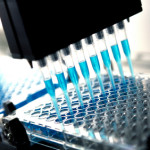Applications & Case Studies: Ultrafiltration Technology
Ultrafiltration membranes are an established process separation technology used in many industrial process applications worldwide. UF membranes have the unique ability to purify, concentrate, and fractionate of a large range of macromolecules and proteins, via a physical membrane barrier, ensuring very consistent rejection and flux performance.
ULTRAFILTRATION APPLICATIONS BY INDUSTRY:
Dairy
- WPC/WPI – Ultrafiltration membranes are an essential process technology in the concentration and purification of whey protein concentrates and isolates from cheese whey.
- MPC/MPI – The use of ultrafiltration membranes is growing significantly in the concentration and purification of milk proteins across the globe.
- Brine Clarification – The clarification of brine solutions via ultrafiltration is an important step in the curing of cheese by preventing the growth of molds on the surface and providing an optimal amount of lactic acid for proper curd ripening.
Biotech / Pharmaceutical
- Enzyme/Protein Concentration – The use of ultrafiltration membranes for enzyme concentration has been accepted as a standard separation process around the world, allowing for the concentration of enzymes and proteins while allowing salts and water to pass through the membrane.
- Endotoxins and Pyrogen Removal – Ultrafiltration has the ability to effectively remove pyrogens and endotoxins from solutions, which is critical to the quality control in the production of biopharmaceutical products.
- Blood Plasma Processing – Ultrafiltration membranes are able to simultaneously concentrate and purify blood plasma for use as a food additive.
Food & Beverage & Plant Extracts
- Gelatin Concentration and Purification – Ultrafiltration membranes provide optimal flux and retention rates important for the concentration of gelatin and removal of microorganisms and bacteria.
- Plant Extract Processing – Plant extracts can be concentrated and purified through the use of ultrafiltration technology, resulting in higher yields compared to conventional processing methods.
- Corn Wet Milling – Membrane filtration technology is used throughout the corn wet milling process and ultrafiltration in particular can be used to separate nutrients and starch, adding value in the process.
- Fruit Juice Concentration – Ultrafiltration membranes are able to removal much of the starch, pectin, microbes, and proteins found in juice processing in order to produce high-quality juices.
Industrial Process and Wastewater
- Oil Removal in Wastewater Treatment – The removal of oils present in many industrial wastewater, streams has become increasingly necessary, in order to accommodate stringent discharge regulations, and growing manufacturing costs. The, utilization of ultrafiltration is an effective method.
- Electrocoat Paint: Cathodic Ecoat Paint Recovery – Ultrafiltration is a key separation process necessary for concentration and recovery of cathodic ecoat paint, and production of permeate used in rinse stages.
- Process Wastewater Treatment – With the ability to reject particulates, bacteria, proteins, and polysaccharides, ultrafiltration can be used in combination with other technologies in the reduction of contaminant loads in industrial wastewater effluent.
Synder Filtration offers an extensive range of ultrafiltration pore sizes in both flat sheet and spiral-wound configurations. Many of these membrane formulations were developed to meet the specific process requirements of a specific customer. Because Synder is financially independent and family owned, we are able to consistently reinvest in our research and application development programs. As a result, we can customize membranes and spiral elements with great speed and flexibility, in order to better serve the process application needs of our customers.
| Membrane | Type | Polymer | Molecular Weight Cut-Off |
| XT | UF* | PES | 1,000 |
| VT | UF* | PES | 3,000 |
| MT | UF* | PES | 5,000 |
| ST | UF* | PES | 10,000 |
| SM | UF* | PES | 20,000 |
| MK | UF* | PES | 30,000 |
| MQ | UF* | PES | 50,000 |
| LY | UF* | PES | 100,000 |
| LV | UF* | PES | 200,000 |
| LX | UF* | PES | 300,000 |
| PZ | UF | PAN | 30,000 |
| PY | UF | PAN | 100,000 |
| PX | UF | PAN | 400,000 |
| V3 | UF*1 | PVDF | 30,000 |
| V4 | UF*1 | PVDF | 70,000 |
| V5 | UF*1 | PVDF | 200,000 |
| V6 | UF*1 | PVDF | 500,000 |
| V7 | UF*1 | PVDF | 800,000 |
| BN | UF* | PVDF | 50,000 |
| BY | UF* | PVDF | 100,000 |
| BX | UF* | PVDF | 250,000 |
| A6 | UF* | PVDF | 500,000 |
*MAX (High Temperature/High pH) Models Also Available
1Only Available In Industrial Grade
CASE STUDY
Applications
questions? Fill out this form. We’ll contact you within 24 hours!
Resources
MEMBRANE RESOURCES
- Definition of a Membrane
- Membrane Materials: Organic vs. Inorganic
- Pressure-Driven Membrane Filtration Processes
- Concentration Polarization in Pressure-Driven Processes
- Degrees of Membrane Separation
- Flux Behavior in Membrane Processes
Module Configurations & Processes
-> View all membrane resourcesTUTORIALS













